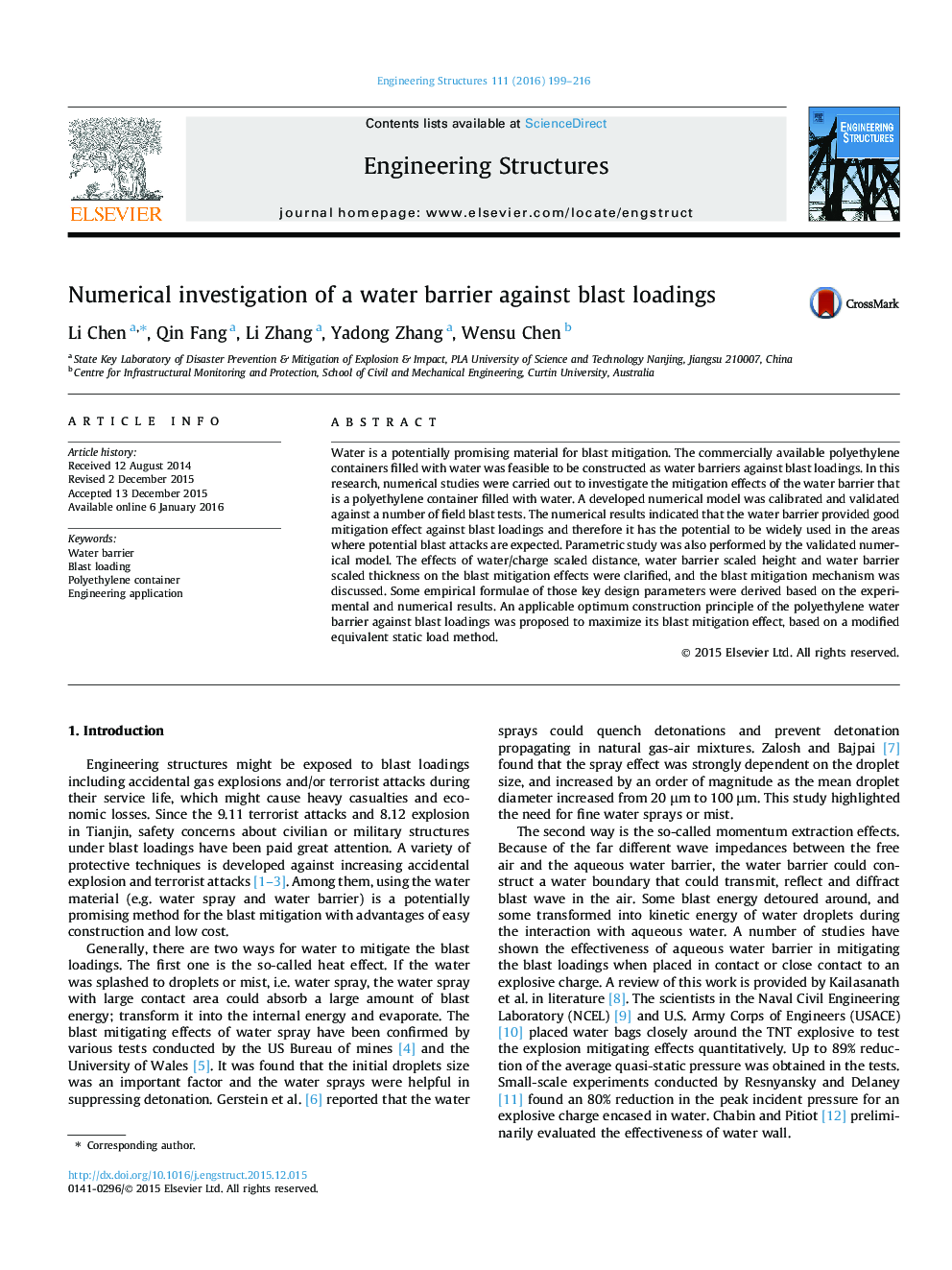| Article ID | Journal | Published Year | Pages | File Type |
|---|---|---|---|---|
| 265864 | Engineering Structures | 2016 | 18 Pages |
•Water barrier constructed by polyethylene container was proposed to resist explosion.•A fine FE model of proposed water barrier against explosion was developed in AUTODYN.•Several field blast experiments were carried out to validate the developed FE model.•Empirical formulae of parameters for constructing the water barrier were derived.•An optimum procedure was proposed to design water barrier in real engineering.
Water is a potentially promising material for blast mitigation. The commercially available polyethylene containers filled with water was feasible to be constructed as water barriers against blast loadings. In this research, numerical studies were carried out to investigate the mitigation effects of the water barrier that is a polyethylene container filled with water. A developed numerical model was calibrated and validated against a number of field blast tests. The numerical results indicated that the water barrier provided good mitigation effect against blast loadings and therefore it has the potential to be widely used in the areas where potential blast attacks are expected. Parametric study was also performed by the validated numerical model. The effects of water/charge scaled distance, water barrier scaled height and water barrier scaled thickness on the blast mitigation effects were clarified, and the blast mitigation mechanism was discussed. Some empirical formulae of those key design parameters were derived based on the experimental and numerical results. An applicable optimum construction principle of the polyethylene water barrier against blast loadings was proposed to maximize its blast mitigation effect, based on a modified equivalent static load method.
